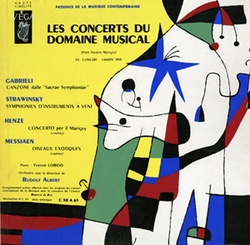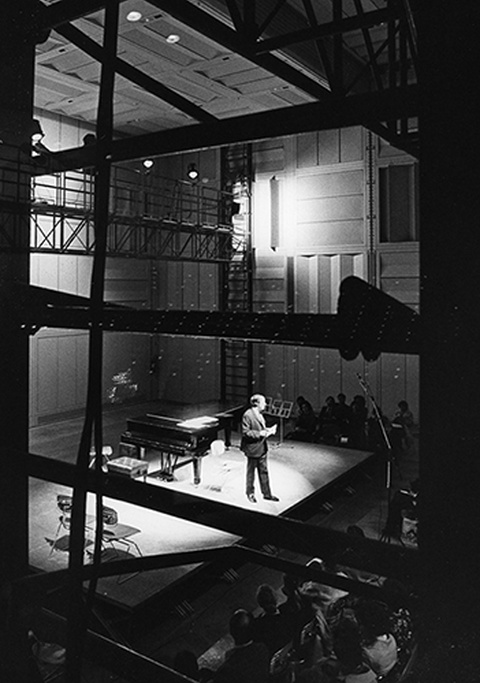1925 | Naissance de Pierre Boulez le 26 mars 1925. Dès son plus jeune âge, il se découvre un intérêt pour la musique. |
1944 | Boulez est admis dans la classe d’harmonie d’Olivier Messiaen au Conservatoire de Paris et obtient son premier prix d’harmonie l’année suivante. De 1944 à 1948, il compose ses premiers opus, souvent pour piano. Ainsi voient le jour Douze Notations, Trois Psalmodies et Première Sonate, puis Sonatine pour flûte et piano et la première version du Visage nuptial pour soprano, alto et orchestre de chambre, sur des poèmes de René Char. |
Douze Notations de Pierre Boulez, concert du 16 octobre 2003 à l'Ircam, Espace de projection
1946 | Boulez est nommé directeur de la musique de scène de la Compagnie Renaud-Barrault et dirige des partitions de Georges Auric, Francis Poulenc, Arthur Honegger et de lui-même. | |
1947 | À cette époque, Boulez s’ouvre au monde et, au travers de ses voyages, noue des relations avec les protagonistes de l’avant-garde musicale tels que Luciano Berio, Luigi Nono et Igor Stravinsky et rencontre des artistes comme Jackson Pollock et Willem de Kooning. Ces expériences vont fortement influencer son œuvre. | |
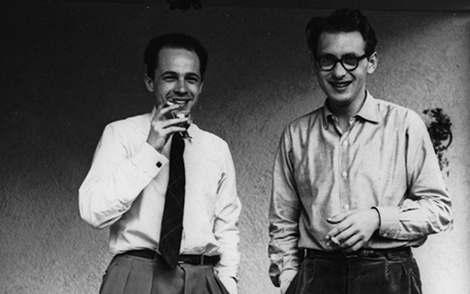 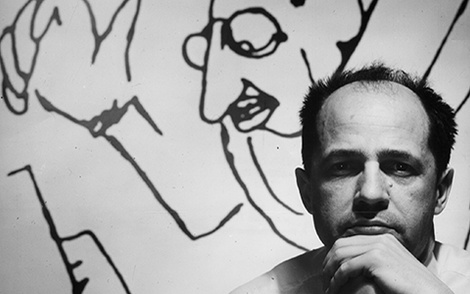 De gauche à droite : Pierre Boulez et Geza Anda, 1951 © DR | ||
1951 | Boulez se livre à des expériences aux studios de musique concrète de Pierre Schaeffer à Radio France, qui ont donné naissance à deux études de musique concrète. | |
1952 | Dans Structures I pour deux pianos, œuvre radicale, Boulez applique le principe du « sérialisme généralisé ». | |
1953 | Soucieux de faire entendre la musique moderne dans de bonnes interprétations, et d’aborder avec plus de professionnalisme la création contemporaine, Boulez organise avec Jean-Louis Barrault les Concerts du « Petit Marigny » qui prendront l’année suivante le nom de « Domaine Musical ». Il en assurera la direction jusqu’en 1967. |
Les Concerts du Domaine musical, 1956 |
1955 | Le Marteau sans maître, pour alto et six instruments, est créée. Cette œuvre a longtemps représenté non seulement la production du compositeur, mais aussi toute une époque de la musique contemporaine européenne. | |
Le Marteau sans maître de Pierre Boulez, concert du 9 décembre 1988 au Centre Georges Pompidou, Grande salle
1960 | Dans Pli selon pli, pour soprano et orchestre, Boulez rend hommage au poète Mallarmé. Cette œuvre est considérée comme le point d'aboutissement et de clôture du « premier Boulez », qui jusqu’en 1960 a bouleversé les données de la pensée, de l'écriture et de l'écoute musicales plus qu'aucun compositeur de sa génération. Commence au tournant des années 60 sa carrière à l’internationale, durant lesquelles il dirige les plus grands orchestres en Europe et aux États-Unis. |
1963 | Sa monographie, Penser la musique aujourd’hui voit le jour. À cette époque, il intervient dans de nombreuses conférences lors des cours d’été à Darmstadt, où il s’affirme avec Karlheinz Stockhausen, Luciano Berio, György Ligeti et Luigi Nono comme une des plus fortes personnalités de sa génération. |
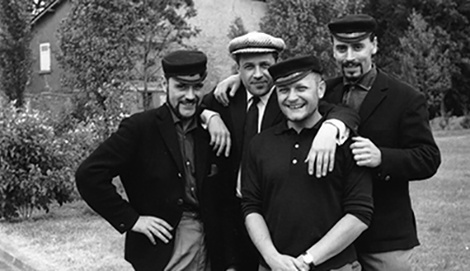
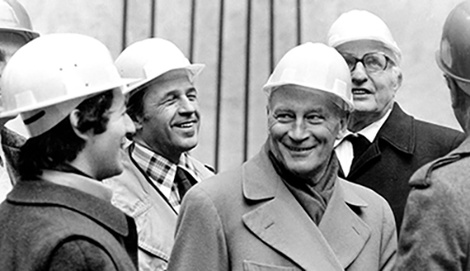
De gauche à droite : Jean Batigne, Pierre Boulez, Georges Van Gucht et Claude Ricou (trois des membres des Percussions de Strasbourg), juillet 1962 © DR
Pierre Boulez et Paul Sacher sur le chantier de l'Ircam, non daté © Marion Kalter
1966 | André Malraux nomme Marcel Landowsky à la tête d’un Service de la Musique. Boulez publie une tribune « Pourquoi je dis non à Malraux » et décide de se détacher des organismes officiels de la musique en France. |
1969 | Il dirige pour la première fois l’Orchestre philharmonique de New York, dont il prendra la direction de 1971 à 1977, succédant à Leonard Bernstein. Parallèlement, il est nommé chef permanent du BBC Symphony Orchestra à Londres, fonction qu’il occupera de 1971 à 1975. |

Éclat, Bâle 1969 © Esther Pfirter/Orkuss
1970 | À la demande du président Georges Pompidou, Boulez réfléchit à l’élaboration d’un projet de centre de recherche musicale qui sera intégré au programme du Centre Beaubourg, et sera dénommé à partir de 1972 : Ircam. Au cours des années à suivre, Boulez va jouer un rôle majeur pour l’évolution de la vie musicale en France en participant à la fondation d’institutions musicales situées au point de jonction entre recherche, création, patrimoine et transmission. |
1975 | Michel Guy, secrétaire d’État aux Affaires culturelles, annonce la création de l’Ensemble intercontemporain (EIC), dont la présidence est confiée à Pierre Boulez. |
|
1976 | Boulez commence à enseigner au Collège de France dans le cadre de la chaire « Invention, technique et langage en musique », qu’il occupera jusqu’en 1995. Toujours en 1976, il est invité à Bayreuth pour diriger la Tétralogie de Wagner, dans une mise en scène de Patrice Chéreau, pour la célébration du centenaire du « Ring ». Cinq années de suite, il dirigera cette production. | |
1977 | L’Ircam organise un cycle de manifestations musicales « Passage du XXe siècle » tout au long de l’année et investit son bâtiment souterrain situé sous l’actuelle place Stravinsky. |
1980 | Boulez réalise une version symphonique de quatre de ses Notations pour piano, travail qu’il poursuivra jusqu’en 1999. |
Notations I-IV de Pierre Boulez, concert du 19 février 1995 à la Maison de Radio France
1981 | Boulez crée Répons, œuvre iconique de l’Ircam qui s’appuie sur la machine 4X, un processeur numérique en temps réel. Dans cette œuvre qu’il développera et révisera jusqu’en 1984, le compositeur se réfère aux chefs-d’œuvre responsoriaux en faisant dialoguer l’ensemble instrumental au centre du dispositif, les six solistes à la périphérie et l’électronique dans tout l’espace. |
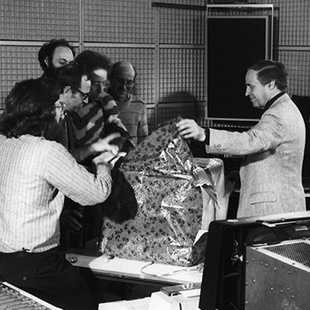
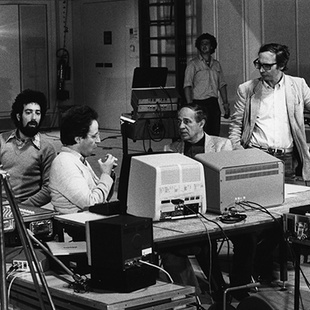
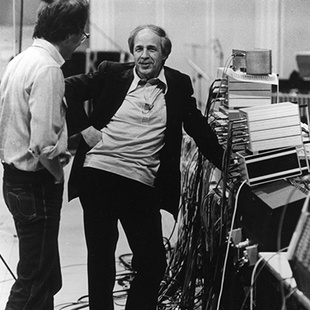
1. Pierre Boulez dans les studios de l'Ircam. Arrivée de la version industrielle de la 4X fabriquée par Sogitec. Devant, de gauche à droite: Jean-Pierre Armand, Giuseppe Di Giugno, Andrew Gerzso, Michel Antin (équipe 4X en dehors d'Andrew Gerzso).
2. Pierre Boulez avec, de gauche à droite, Didier Arditi, Andrew Gerzso et Giuseppe di Giugno travaillant avec le dispositif électroacoustique pour Répons à l'Espace de projection (1980) © Fabien Chalhoub
3. Pierre Boulez et Andrew Gerzso derrière le dispositif électroacoustique pour Répons © Ircam/photo : Ralph Fassey
1986 | Tournée de l’Ensemble intercontemporain et de l’Ircam aux États-Unis. |
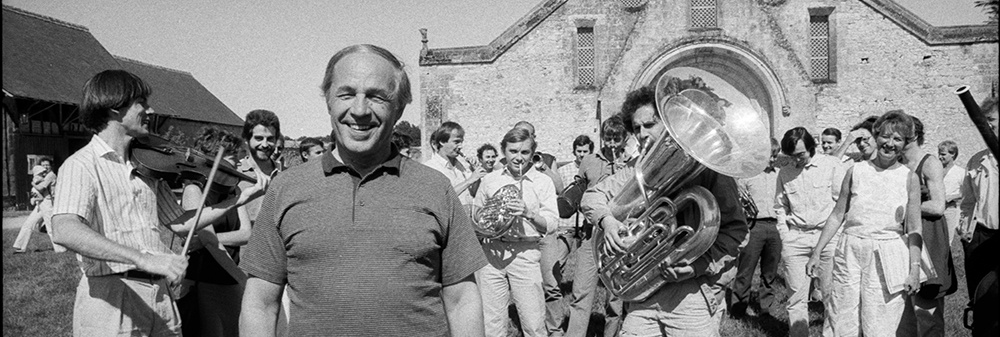
Pierre Boulez et l'Ensemble intercontemporain lors du festival de musique classique La Grange de Meslay, 1985 © Marion Kalter / akg-images
1988 | Boulez réalise une série de six émissions télévisées : « Boulez XXe siècle ». Dans le cadre du festival d’Avignon, il dirige Répons à la carrière Boulbon. Compositeur invité du centre Acanthes, à Villeneuve-lès-Avignon, où il donne une série de cours de direction d’orchestre. |
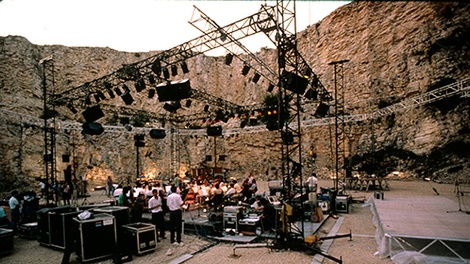
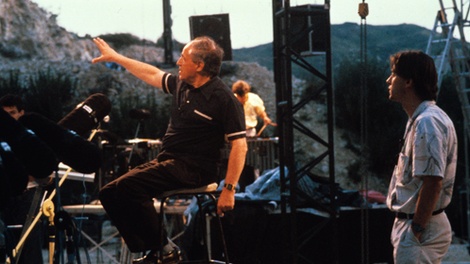
1. Répons, vue du dispositif, carrière Callet, Boulbon, Avignon, 1988 © Dominique Darr
2. Répons, Pierre Boulez, Olivier Warusfel, carrière Callet, Boulbon, Avignon, 1988 © Dominique Darr
1992 | Laurent Bayle reprend la direction de l’Ircam. Au cours des années suivantes, Boulez compose les ultimes œuvres de son catalogue, dont …explosante-fixe…,Incises et Anthèmes 2, et signe un contrat d’exclusivité avec Deutsche Grammophon. En août de la même année, le festival de Salzbourg lui consacre une programmation exhaustive consistant en concerts avec l’Ensemble intercontemporain et l’Ircam, et avec des formations symphoniques. |
Anthèmes 2 de Pierre Boulez, concert du 6 février 2016 à la Maison de la Radio
1995 | La Cité de la Musique est inaugurée par François Mitterrand, projet pour lequel Boulez œuvrait depuis le début des années 1980. |
2000 | Boulez remporte un Grammy Award pour Répons. |
2004 | Préoccupé par la transmission auprès de la jeune génération, il crée l’Académie du Festival de Lucerne qui accueille chaque année cent trente musiciens venus se perfectionner dans l’interprétation de la musique de notre temps. |
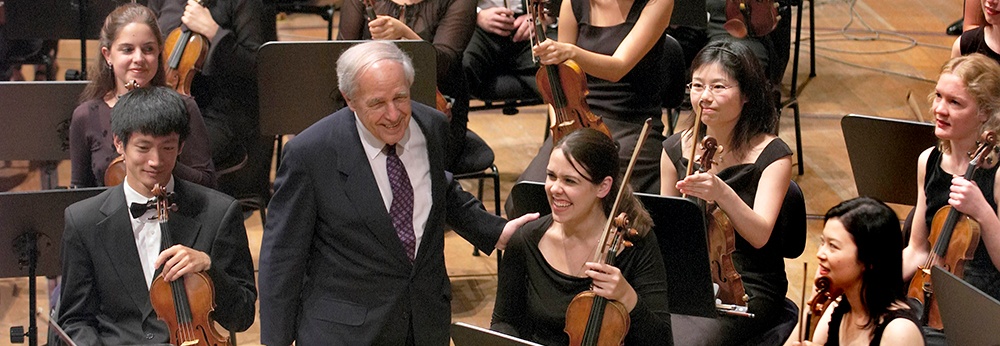
Concert symphonique dans le cadre de l'Académie du Festival de Lucerne, dirigé par Pierre Boulez, 2005 © Priska Ketterer Luzern
2009 | Le Musée du Louvre lui consacre une exposition, Pierre Boulez, œuvre : fragment. |
2011 | Boulez entreprend une tournée européenne avec les musiciens de l’Académie du Festival de Lucerne et l’Ensemble intercontemporain autour de son œuvre Pli selon pli. |
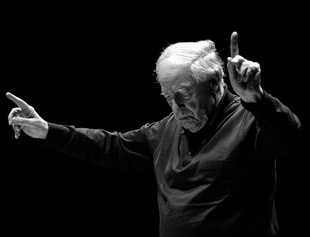
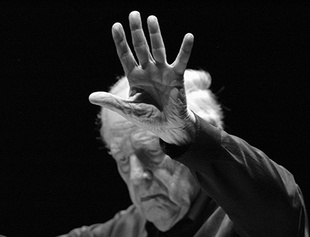
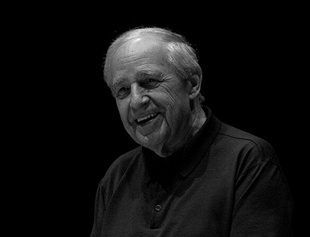
Pierre Boulez, 2007 © Jean Radel
2013 | La Deutsche Grammophon édite un coffret de 13 CDs de l’œuvre complète du compositeur. |
2015 | La Philharmonie de Paris, projet pour lequel Boulez militait depuis de nombreuses années, ouvre, concrétisant ainsi son action visionnaire en matière de politique culturelle. |
2016 | Pierre Boulez s’éteint à son domicile de Baden-Baden, le 5 janvier 2016. |



